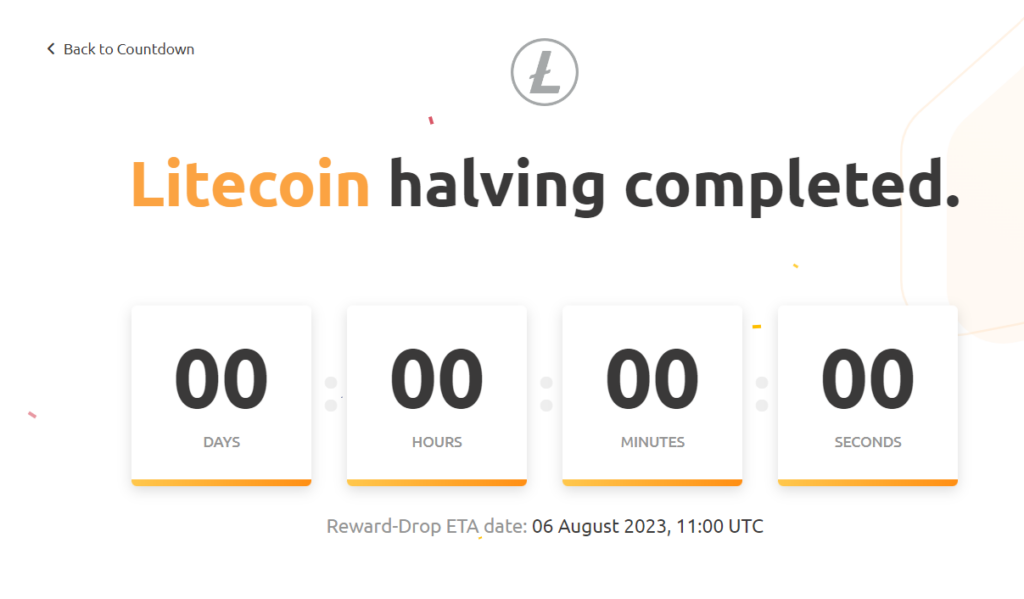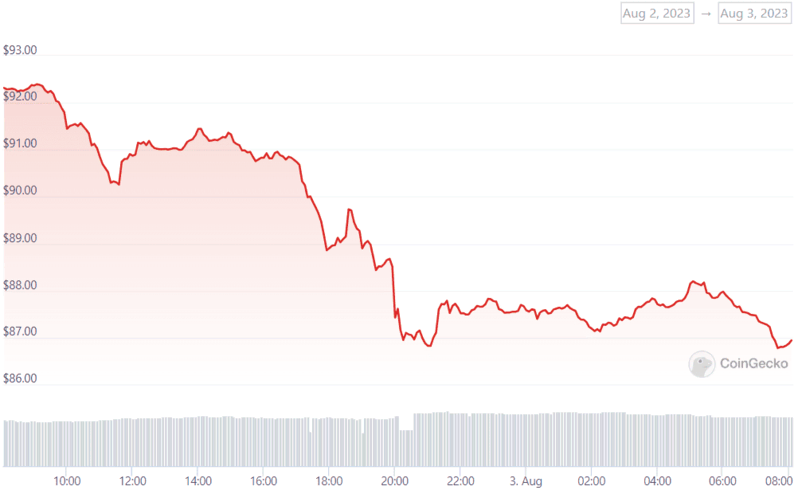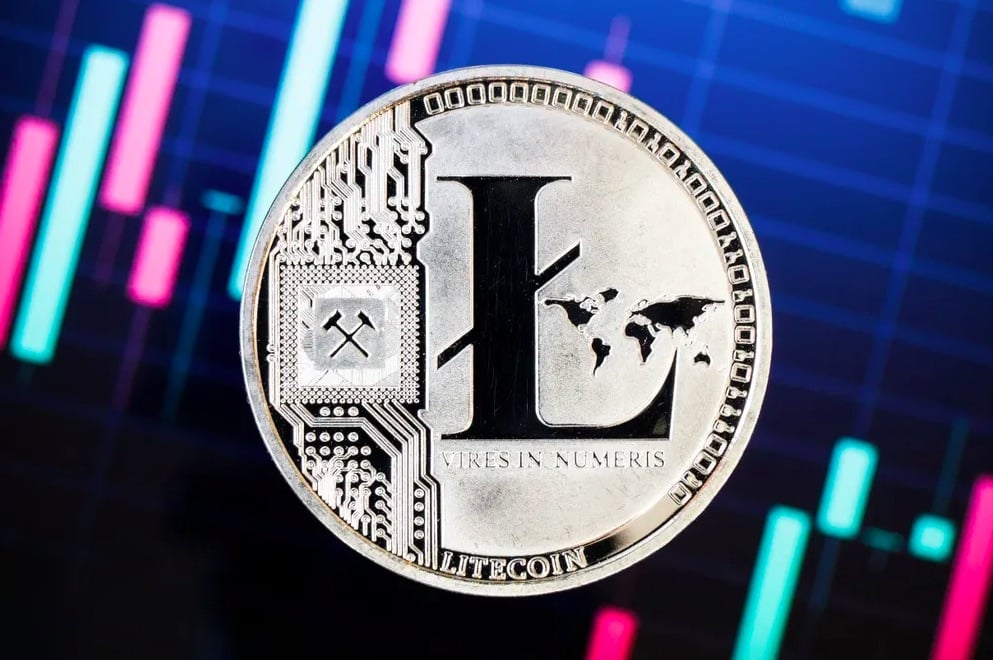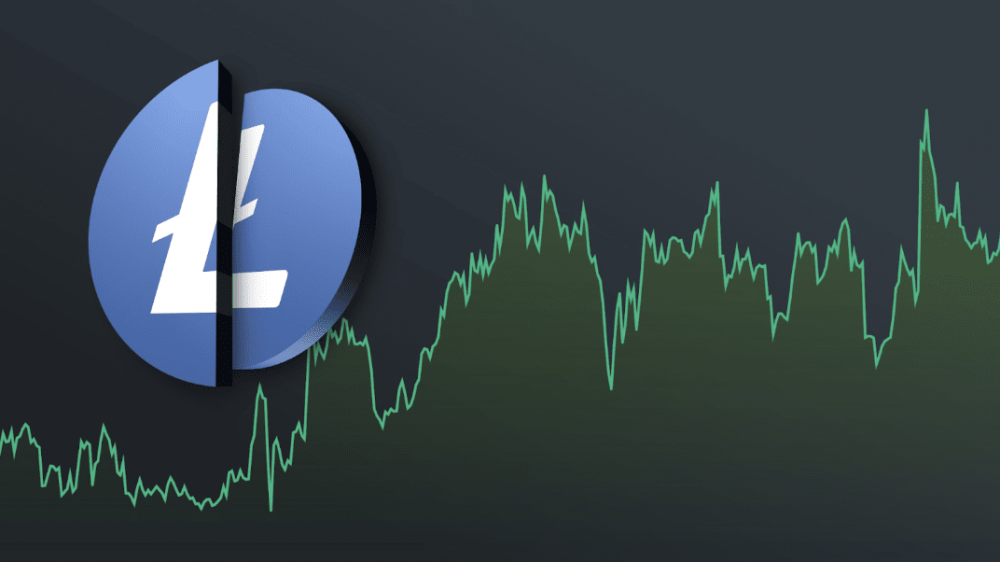Litecoin, one of the leading cryptocurrencies, recently experienced its third block reward halving. This event, which is scheduled to occur approximately every four years, or after 840,000 blocks have been mined, reduces the reward for miners from 12.5 LTC to 6.25 LTC. The halving took place at a block height of 2.520,000 and marked an important milestone in Litecoin history. However, the value of LTC has plummeted. Here are the details…
Litecoin completes its halving
The purpose of the block reward halving is to increase the scarcity of Litecoin over time, similar to the scarcity of precious metals like gold. By reducing the reward to miners, the network aims to gradually limit the total supply of Litecoin to 84 million LTC. cryptocoin.com As we have also reported, this limit is planned to be reached around the year 2142. This deflationary mechanism contrasts with traditional fiat currencies, where central banks can freely print money, potentially leading to inflation.

However, despite the long-term prospects for price increases due to the shortage, Litecoin’s immediate market reaction has not been as expected. In the hours following the halving, LTC price took a dip and is currently trading at around $86.80. This represents a 6 percent decrease from the previous day’s value and a 5 percent decrease from the price one week ago. This sudden drop can be attributed to the “sell the news” phenomenon, where investors profit after a highly anticipated event.

Price hits local records ahead of LTC
Prior to the previous halving events, Litecoin’s price showed a noticeable movement, often reaching peaks before the halving and stabilizing afterward. For example, as reported by CoinGecko, just before this last halving, Litecoin’s price hit $113 on July 3. However, such price fluctuations are not uncommon in the highly volatile cryptocurrency market. Also, the long-term effect of halving may not be fully understood yet.
LITECOIN HAS SUCCESSFULLY HALVED ITS BLOCK REWARD!
⚡ $LTC ⚡ pic.twitter.com/iemCnkPsdu
— Litecoin (@litecoin) August 2, 2023
The block reward halving has a direct impact on miners who receive fewer coins for their efforts after the event. Litecoin’s mining community, like other cryptocurrencies, plays a vital role in securing the network and processing transactions. Therefore, halving can lead to changes in mining profitability and potentially affect the overall hashrate of the network.
The ‘digital silver’ narrative continues
Litecoin, in particular, has a unique dual mining relationship with Dogecoin through combined mining. A study by Binance Research revealed that Dogecoin’s hashrate exhibits a strong positive correlation with Litecoin’s hashrate. This means that changes in Litecoin’s mining environment may also affect Dogecoin’s network security and mining dynamics. Charlie Lee, the founder of Litecoin, created this cryptocurrency in 2011, modeling it on Bitcoin with similar technical characteristics. While Bitcoin is often referred to as “digital gold”, Litecoin has earned the nickname “digital silver” due to its similarities to Bitcoin.

Both cryptocurrencies use a proof-of-work (PoW) consensus mechanism. However, Litecoin offers faster transaction times and lower fees. Despite the initial price reaction, many cryptocurrency enthusiasts and analysts remain optimistic long-term prospects for Litecoin. The controlled supply program, combined with its technological features, continues to attract the attention of both investors and users. As with every major event in the cryptocurrency market, the real impact of Litecoin’s third halving may unfold over the coming weeks and months.





